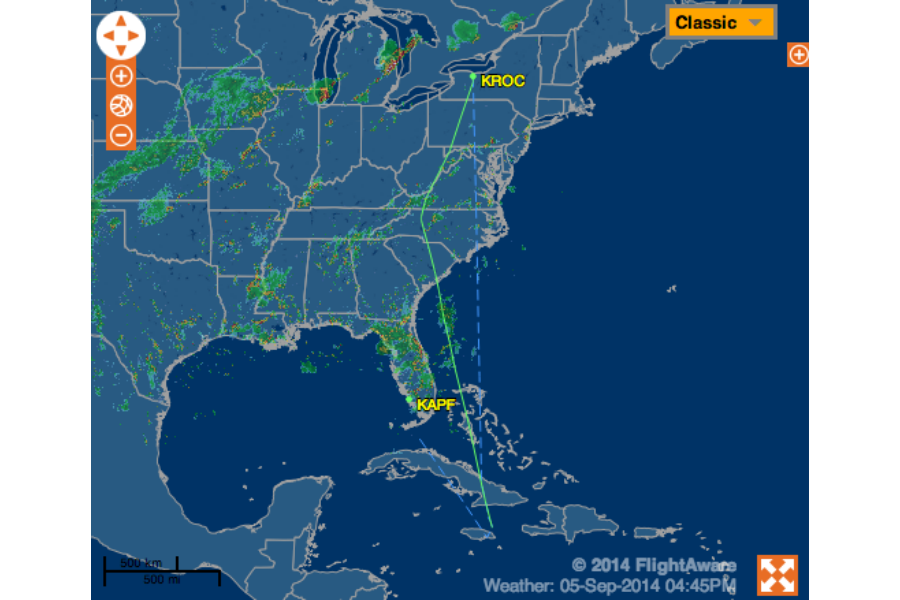Tragic end to eerie flight: Small plane on way to Florida crashes off Jamaica
Loading...
The eerie journey of a small private US plane with an unresponsive pilot ended tragically Friday afternoon when it crashed off the coast of Jamaica.
Larry Glazer, a real estate developer from the Rochester, N.Y., area, and his wife, Jane, were aboard the plane and are presumed to be dead, New York Gov. Andrew Cuomo said in a statement Friday afternoon, The New York Times reported.
Air traffic control lost contact with the plane sometime after 10:00 a.m., prompting the North American Aerospace Defense Command (NORAD) to scramble fighter jets to check on the plane. The jets followed the plane until it reached Cuban airspace, at which point they peeled off to refuel. Jamaican authorities later reported that the plane had crashed into the sea about 14 miles northeast of the northern coastal town of Port Antonio.
The plane was identified as a Socata TBM-700, a high-performance, single engine turboprop light business and utility aircraft, with the tail number N900KN. According to FAA records, the plane is registered to a Rochester address which also houses the Buckingham Properties real estate firm. The firm's website mentions that Mr. Glazer, the company owner, "spends some of his spare time on the ground – gardening around his house with his wife Jane; and some in the sky – flying his plane."
The single-engine plane departed Greater Rochester International Airport in New York at 8:45 a.m. Friday morning and was scheduled to arrive in Naples, Fla. around noon, according to a flight plan filed with the Federal Aviation Administration.
The path of the aircraft appears to have missed a crucial turn toward Florida – presumably when the pilot became incapacitated – according to the live flight tracker website FlightAware.
According to The New York Times, at about 10 a.m. the pilot asked air traffic controllers for permission to descend from 28,000 feet to 18,000. He was allowed to descend to 25,000 feet, but within minutes his voice could be heard becoming addled, the Times reported, citing a conversation between the pilot and air traffic controllers recorded by the website LiveATC.net.
What exactly happened to the pilot is still unclear, but one of the fighter jet pilots reported that he had spotted condensation on the windows of the cockpit, which may suggest that the pilot may have passed out as a result of hypoxia.
Hypoxia occurs when physiological tissues are deprived of oxygen, which can happen if the cabin suddenly becomes depressurized. The sudden lack of oxygen can render a person unconscious very quickly, leaving no time for a pilot to send a distress signal.
In-flight hypoxia was a regular occurrence among air force pilots during World War I. Thanks to improvements in the performance and reliability of cabin pressurization systems, such incidents are no longer commonplace.
On Saturday, another private pilot became unresponsive during a flight after losing consciousness. That plane, a Cirrus SR20, drifted into restricted airspace over Washington. Fighter jets were able to catch up with the plane and confirm that the pilot had fallen unconscious. The jet pilots stayed with the plane for more than 120 miles before it ran out of fuel and crashed off the coast of Virginia.
In 1999, PGA Tour winner Payne Stewart and five others aboard a Learjet died during a similar plane crash after the cabin rapidly became depressurized rendering all individuals onboard unconscious. The National Transportation Safety Board was unable to determine what caused the depressurization.
This report includes material from the Associated Press.








